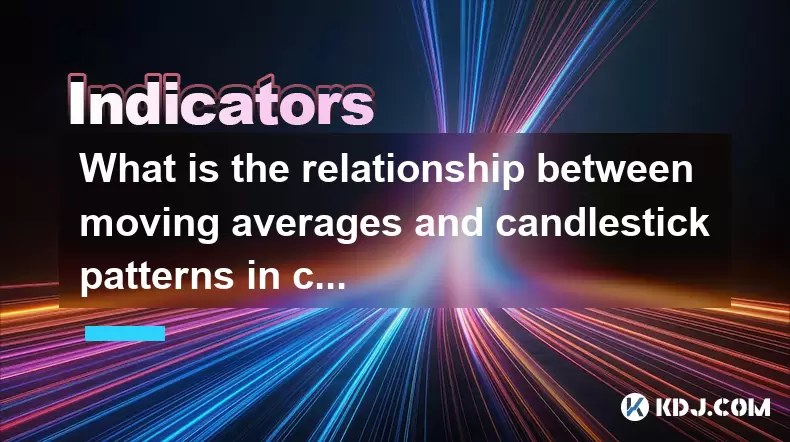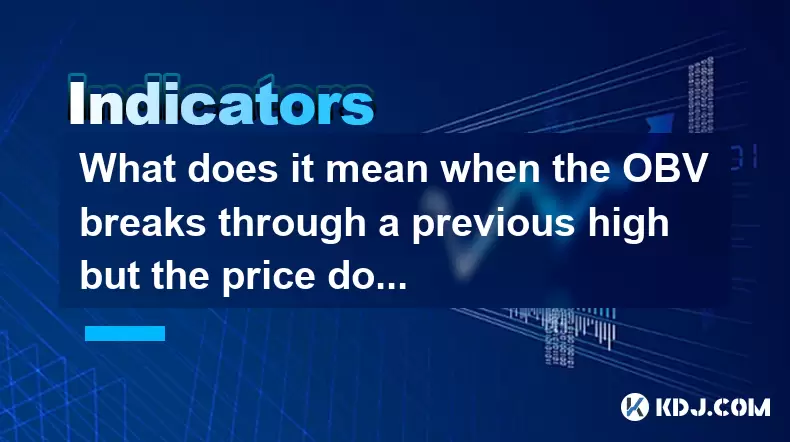-
 Bitcoin
Bitcoin $116700
0.24% -
 Ethereum
Ethereum $3973
4.34% -
 XRP
XRP $3.283
7.68% -
 Tether USDt
Tether USDt $1.000
0.01% -
 BNB
BNB $789.8
2.27% -
 Solana
Solana $176.2
3.31% -
 USDC
USDC $0.9999
0.00% -
 Dogecoin
Dogecoin $0.2238
5.14% -
 TRON
TRON $0.3389
-0.51% -
 Cardano
Cardano $0.7907
4.03% -
 Stellar
Stellar $0.4527
10.02% -
 Hyperliquid
Hyperliquid $41.07
4.27% -
 Sui
Sui $3.794
1.77% -
 Chainlink
Chainlink $19.49
10.40% -
 Bitcoin Cash
Bitcoin Cash $580.9
0.74% -
 Hedera
Hedera $0.2617
4.32% -
 Avalanche
Avalanche $23.41
3.67% -
 Ethena USDe
Ethena USDe $1.001
-0.03% -
 Litecoin
Litecoin $122.4
1.38% -
 Toncoin
Toncoin $3.364
1.49% -
 UNUS SED LEO
UNUS SED LEO $8.988
0.37% -
 Shiba Inu
Shiba Inu $0.00001295
2.82% -
 Uniswap
Uniswap $10.62
5.75% -
 Polkadot
Polkadot $3.922
4.46% -
 Dai
Dai $1.000
0.01% -
 Bitget Token
Bitget Token $4.494
2.15% -
 Monero
Monero $268.0
-1.30% -
 Cronos
Cronos $0.1523
3.68% -
 Pepe
Pepe $0.00001127
4.43% -
 Aave
Aave $285.4
4.85%
What is the relationship between moving averages and candlestick patterns in crypto analysis?
Combining moving averages with candlestick patterns boosts trading accuracy by confirming signals—like a bullish engulfing near the 50-day EMA—increasing confidence in crypto entries. (154 characters)
Aug 08, 2025 at 10:14 pm

Understanding Moving Averages in Cryptocurrency Trading
Moving averages (MAs) are among the most widely used technical indicators in the cryptocurrency market due to their ability to smooth out price data over a specified time period. Traders rely on moving averages to identify the direction of the trend and potential reversal points. The two primary types used are the Simple Moving Average (SMA) and the Exponential Moving Average (EMA). The SMA calculates the average closing price over a set number of periods, giving equal weight to each data point. In contrast, the EMA places more emphasis on recent prices, making it more responsive to new information.
When analyzing digital assets such as Bitcoin or Ethereum, traders often use common timeframes like the 50-day, 100-day, or 200-day moving averages. These lines appear on price charts and help visualize whether the market is in an uptrend, downtrend, or consolidating. For instance, when the current price is above the 200-day EMA, it is generally interpreted as a bullish signal. Conversely, a price below this moving average may suggest bearish momentum. These dynamic support and resistance levels are essential for decision-making in volatile crypto markets.
The Role of Candlestick Patterns in Technical Analysis
Candlestick patterns provide visual insight into market sentiment by displaying the open, high, low, and close prices over a specific timeframe. Each candlestick tells a story about the battle between buyers and sellers during that period. Patterns such as the doji, hammer, engulfing, and shooting star are frequently used by crypto traders to anticipate potential price reversals or continuations.
For example, a bullish engulfing pattern that forms after a prolonged downtrend may indicate that buyers are regaining control. Similarly, a dark cloud cover pattern appearing at the top of an uptrend could signal an impending reversal. These patterns are especially valuable in the crypto space, where high volatility can lead to rapid shifts in momentum. However, relying solely on candlestick patterns without confirmation from other tools can lead to false signals.
How Moving Averages Enhance Candlestick Pattern Reliability
The real power of combining moving averages with candlestick patterns lies in confirmation. A single candlestick formation may suggest a reversal, but its significance increases dramatically when it occurs near a key moving average. For instance, if a hammer pattern forms precisely at the 50-day EMA during a downtrend, it strengthens the likelihood of a bounce. This confluence suggests that not only are buyers stepping in, but the price is also finding support at a historically significant level.
Traders often look for candlestick patterns that develop near or touch major moving averages such as the 100-day or 200-day SMA. When a morning star pattern appears near the 200-day SMA, it adds weight to the bullish reversal thesis. The moving average acts as a filter, helping to distinguish high-probability setups from random noise in the data. This synergy allows traders to enter positions with greater confidence and better risk-reward ratios.
Practical Steps to Combine Moving Averages and Candlestick Patterns
To effectively use both tools in crypto trading, follow these steps:
- Open a crypto trading chart on a platform such as TradingView or Binance.
- Apply the 50-day EMA and 200-day SMA to the chart using the indicator menu.
- Adjust the chart timeframe to 4-hour or daily for more reliable signals.
- Scan for recognizable candlestick patterns such as doji, engulfing, or hammers.
- Check whether the pattern occurs near or at one of the moving averages.
- Confirm with volume analysis—a spike in volume during the pattern increases validity.
- Use stop-loss orders below the low of the pattern (for long entries) to manage risk.
For example, if you spot a bullish engulfing pattern on Bitcoin’s daily chart and it aligns with the 50-day EMA, consider this a strong buy signal. Wait for the next candle to close above the engulfing candle’s high to confirm momentum. This structured approach reduces emotional trading and enhances precision.
Common Misinterpretations and How to Avoid Them
One common mistake is assuming that every candlestick pattern near a moving average is a valid trade signal. In reality, context matters. A hammer pattern forming during a strong downtrend may fail if the broader market sentiment remains bearish. Additionally, moving averages can lag, especially SMAs, meaning they may not reflect sudden shifts in price caused by news or macroeconomic events.
Another pitfall is ignoring the timeframe alignment. A pattern on the 15-minute chart may conflict with the trend on the daily chart. Always assess higher timeframes first to determine the dominant trend. Also, avoid overloading charts with too many moving averages, as this can create confusion. Stick to 2–3 key MAs and focus on clean, well-defined candlestick patterns.
Backtesting Strategies Using MAs and Candlesticks
To validate a strategy combining moving averages and candlestick patterns, backtesting is essential. Begin by selecting a cryptocurrency pair, such as ETH/USDT, and gather historical price data. Use charting software that supports strategy testing, like TradingView’s Pine Script or MetaTrader with a crypto plugin.
Define your rules clearly:
- Entry: A bullish engulfing pattern forms at or near the 50-day EMA.
- Confirmation: The next candle closes above the engulfing candle’s high.
- Exit: Take profit at a 2:1 risk-reward ratio or trail the stop using the 20-day EMA.
- Stop-loss: Placed below the low of the engulfing candle.
Run the test across multiple market cycles, including bull and bear phases. Analyze win rate, average gain per trade, and drawdown. Adjust parameters if needed, such as switching from SMA to EMA or changing the timeframe. This process helps refine the strategy before risking real capital.
Frequently Asked Questions
Q: Can moving averages and candlestick patterns be used on all cryptocurrencies?
Yes, these tools apply to any tradable crypto asset, including Bitcoin, altcoins, and stablecoins. However, low-liquidity tokens may produce unreliable patterns due to manipulation or low trading volume.
Q: Which moving average is best for short-term crypto trading?
The 20-day EMA is commonly used for short-term analysis because it reacts quickly to price changes. It works well with 1-hour or 4-hour candlestick charts to identify intraday reversals.
Q: How do I know if a candlestick pattern is valid near a moving average?
A valid pattern should form within 1–2% of the moving average price and be accompanied by increased trading volume. The body of the candle should clearly reflect the sentiment shift described by the pattern.
Q: Should I rely only on moving averages and candlesticks for trading decisions?
While powerful, these tools should be part of a broader strategy. Incorporate volume indicators, RSI, or MACD for additional confirmation. No single method guarantees success in the unpredictable crypto market.
Disclaimer:info@kdj.com
The information provided is not trading advice. kdj.com does not assume any responsibility for any investments made based on the information provided in this article. Cryptocurrencies are highly volatile and it is highly recommended that you invest with caution after thorough research!
If you believe that the content used on this website infringes your copyright, please contact us immediately (info@kdj.com) and we will delete it promptly.
- Navigating the Crypto Market in 2025: Smart Decisions for the Meme Supercycle
- 2025-08-09 08:50:12
- DeFi, Tokenized Stocks, and NFTs: A Wild Ride in the Crypto Cosmos
- 2025-08-09 08:30:11
- AERO Price Skyrockets: Aerodrome Finance Sees Massive Surge Amid Coinbase Buzz
- 2025-08-09 08:55:19
- Coinbase, Cosmos, and dYdX: Navigating the Crypto Currents
- 2025-08-09 06:30:16
- BNB Price, Altcoins, and Predictions: What's the Buzz?
- 2025-08-09 06:30:16
- Crypto Presale Projects Primed for Gains in 2025: A New Yorker's Take
- 2025-08-09 06:50:15
Related knowledge

What does it mean when the Williams' oscillator repeatedly hits bottoms but fails to rebound?
Aug 09,2025 at 09:28am
Understanding the Williams %R OscillatorThe Williams %R oscillator, developed by Larry Williams, is a momentum indicator used in technical analysis to...

When the J line in the KDJ indicator suddenly turns downward after being continuously overbought, does it indicate a top?
Aug 09,2025 at 06:35am
Understanding the KDJ Indicator and Its ComponentsThe KDJ indicator is a momentum oscillator widely used in cryptocurrency technical analysis to ident...

What does it mean when the TRIX indicator suddenly diverges downward after a long period of convergence?
Aug 09,2025 at 12:56am
Understanding the TRIX Indicator in Cryptocurrency TradingThe TRIX indicator, or Triple Exponential Average, is a momentum oscillator used in technica...

What does it mean when the OBV breaks through a previous high but the price doesn't reach a new high?
Aug 09,2025 at 07:57am
Understanding the On-Balance Volume (OBV) IndicatorThe On-Balance Volume (OBV) is a technical analysis indicator that uses volume flow to predict chan...

Why is the rise limited after a MACD bottoming divergence?
Aug 09,2025 at 12:07am
Understanding MACD Bottoming Divergence in Cryptocurrency TradingThe MACD (Moving Average Convergence Divergence) is a widely used technical indicator...

What does it mean when the OBV continues to rise but the price is trading sideways?
Aug 08,2025 at 10:35pm
Understanding On-Balance Volume (OBV)On-Balance Volume (OBV) is a technical indicator that uses volume flow to predict changes in stock or cryptocurre...

What does it mean when the Williams' oscillator repeatedly hits bottoms but fails to rebound?
Aug 09,2025 at 09:28am
Understanding the Williams %R OscillatorThe Williams %R oscillator, developed by Larry Williams, is a momentum indicator used in technical analysis to...

When the J line in the KDJ indicator suddenly turns downward after being continuously overbought, does it indicate a top?
Aug 09,2025 at 06:35am
Understanding the KDJ Indicator and Its ComponentsThe KDJ indicator is a momentum oscillator widely used in cryptocurrency technical analysis to ident...

What does it mean when the TRIX indicator suddenly diverges downward after a long period of convergence?
Aug 09,2025 at 12:56am
Understanding the TRIX Indicator in Cryptocurrency TradingThe TRIX indicator, or Triple Exponential Average, is a momentum oscillator used in technica...

What does it mean when the OBV breaks through a previous high but the price doesn't reach a new high?
Aug 09,2025 at 07:57am
Understanding the On-Balance Volume (OBV) IndicatorThe On-Balance Volume (OBV) is a technical analysis indicator that uses volume flow to predict chan...

Why is the rise limited after a MACD bottoming divergence?
Aug 09,2025 at 12:07am
Understanding MACD Bottoming Divergence in Cryptocurrency TradingThe MACD (Moving Average Convergence Divergence) is a widely used technical indicator...

What does it mean when the OBV continues to rise but the price is trading sideways?
Aug 08,2025 at 10:35pm
Understanding On-Balance Volume (OBV)On-Balance Volume (OBV) is a technical indicator that uses volume flow to predict changes in stock or cryptocurre...
See all articles

























































































